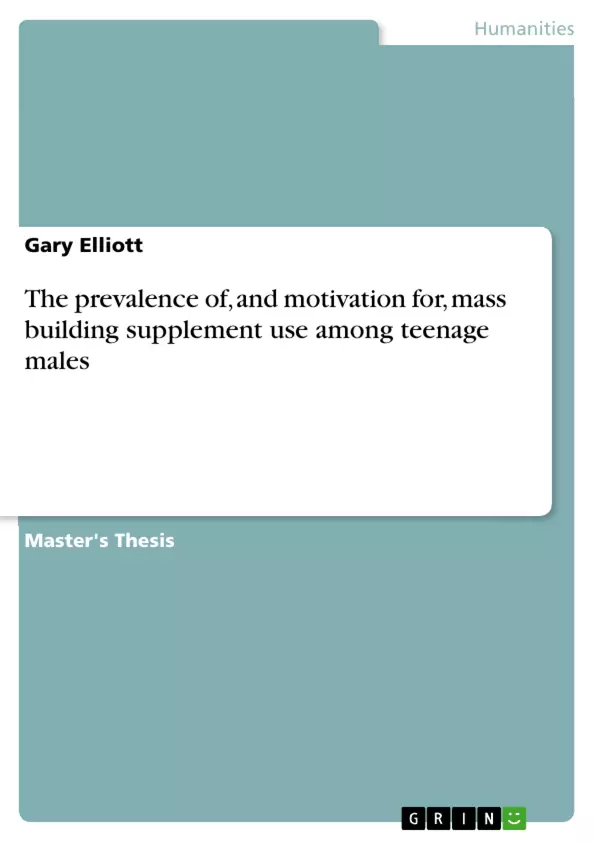The main objective of this study was to gather information from South African teenagers as to the prevalence of, and motivation for, the use of mass building supplements. In addition to gathering information pertaining to the frequency of use, the favoured brand of supplement and the type of supplements used by teenagers; the study also focused on attempting to identify an ‘at risk’ age for the commencement of supplement use. The motivation for the use of mass building supplements was integral in the formulation of the hypothesis; that body dissatisfaction was the primary motivation more than increased sporting prowess for the use of supplements.
Gathering of quantitative data took the form of a structured questionnaire comprising three distinct sections. The first section gathered demographic information on age, grade, race and sporting involvement. The second section focused attention on body image questions and contained three components. In the first component the respondents were asked to rate their level of ‘body satisfaction’ using a Likert-type scale for various aspects of their physique. The second component focused on their ‘thoughts’ about their body and the last component focused on the level of ‘appearance importance’ of the respondents. This section of the questionnaire utilized analysis tables generated originally by Thomas F Cash. The third section focused on gathering information in relation to the level, frequency and descriptions of mass building supplement use among the respondents.
The questionnaire was administered to Grade 8 – 12 learners (aged 12-19years old) of a Boys’ School in Pretoria, South Africa. The sample group was randomly selected and yielded 176 completed or partially completed questionnaires. Data was entered into the Moon Stats statistical programme for analysis; affording the opportunity to generate univariate and bivariate statistics along with calculations of Pearson’s product-moment correlations.
Inhaltsverzeichnis (Table of Contents)
- Chapter 1: Introduction
- the research topic
- the research problem
- aim and objectives of the research
- definitions of some terms and concepts
Zielsetzung und Themenschwerpunkte (Objectives and Key Themes)
This research aimed to investigate the prevalence of, and motivation for, mass building supplement use among South African teenage males. The study sought to identify the frequency of supplement use, favored brands, types of supplements, and an "at risk" age for supplement initiation. The study hypothesized that body dissatisfaction was the primary motivation for supplement use, outweighing sporting prowess.
- Prevalence of mass building supplement use among teenage males
- Motivation for mass building supplement use
- Identification of an "at risk" age for supplement initiation
- Influence of body image on supplement use
- Relationship between sporting prowess and supplement use
Zusammenfassung der Kapitel (Chapter Summaries)
Chapter 1 introduces the research topic, problem, aim, and objectives of the study. It also defines key terms and concepts relevant to the research.
Schlüsselwörter (Keywords)
The key words and focus topics of this research include mass building supplements, teenage males, body dissatisfaction, sporting prowess, supplement use, "at risk" age, and body image.
- Citation du texte
- Gary Elliott (Auteur), 2010, The prevalence of, and motivation for, mass building supplement use among teenage males, Munich, GRIN Verlag, https://www.grin.com/document/178673



